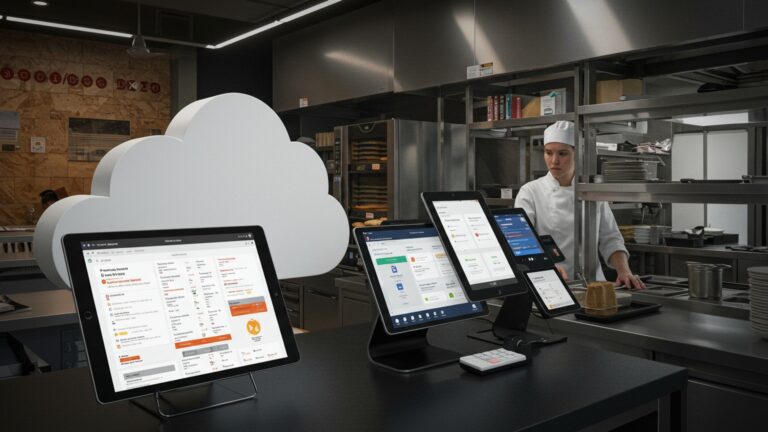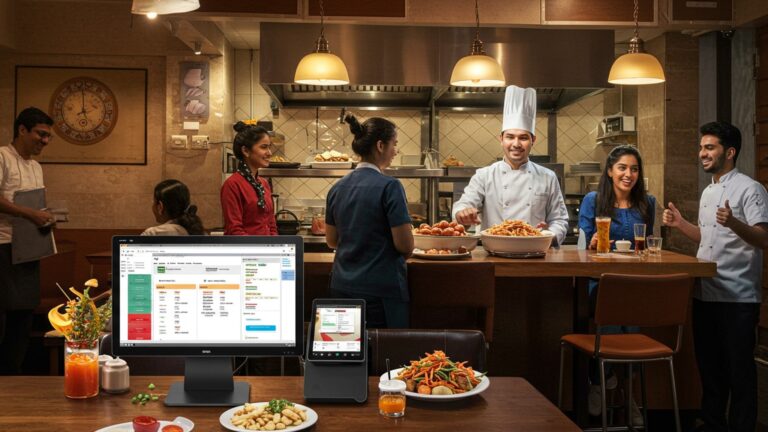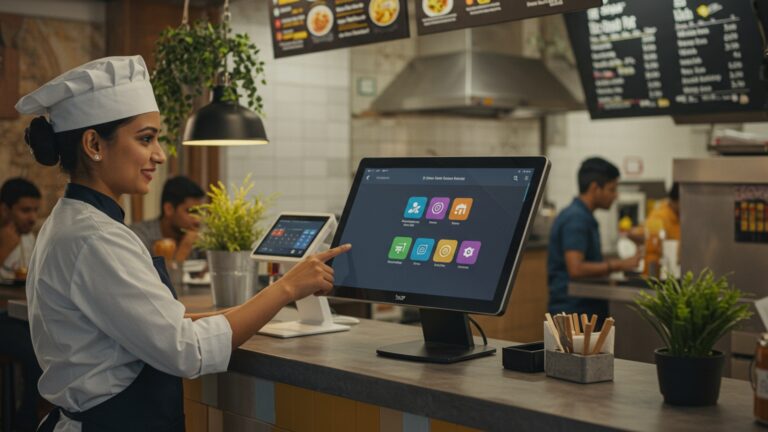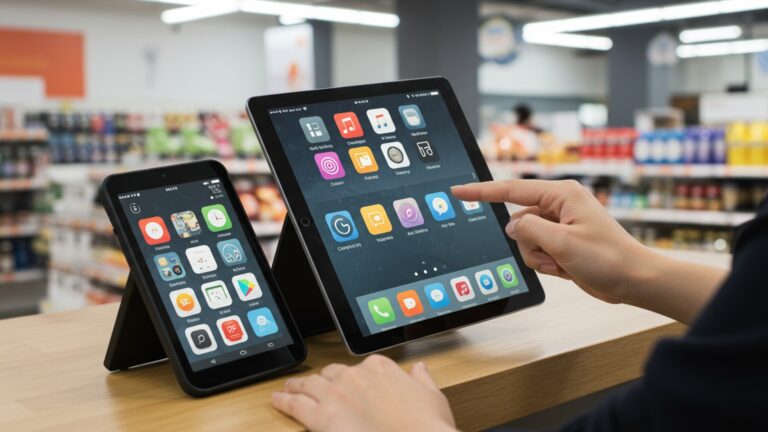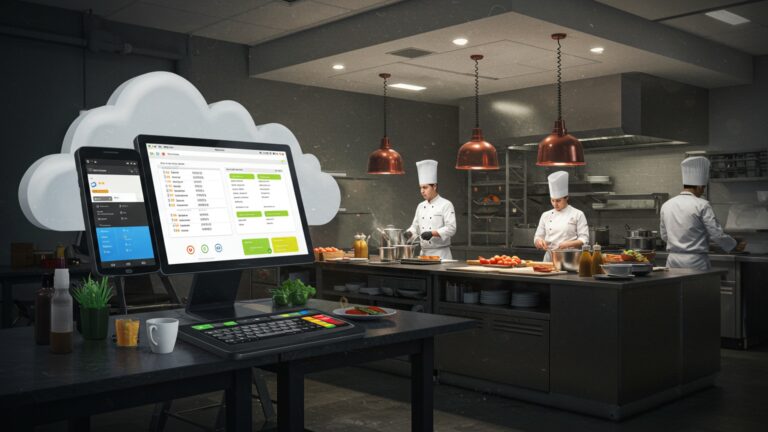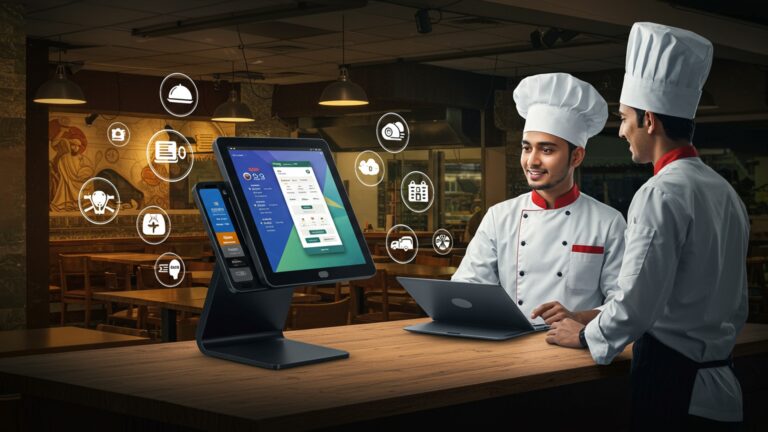Learn 6 Key Advantages of Android POS for Indian Restaurants
The bustling landscape of Indian restaurants demands more than just culinary excellence; it requires seamless operational efficiency to thrive amidst intense competition and evolving customer expectations. Traditional systems often struggle with the dynamic needs of managing diverse regional menus, fluctuating ingredient costs. the explosion of online delivery platforms, creating bottlenecks during peak hours. This is precisely where an advanced Android POS for restaurants India emerges as a transformative solution, offering a robust, flexible. cost-effective platform. Leveraging its intuitive interface and vast app ecosystem, modern Android POS systems empower establishments to streamline order management, enhance customer experiences through integrated loyalty programs. gain critical insights from real-time sales data, ensuring operational agility and sustained growth in a digital-first era.
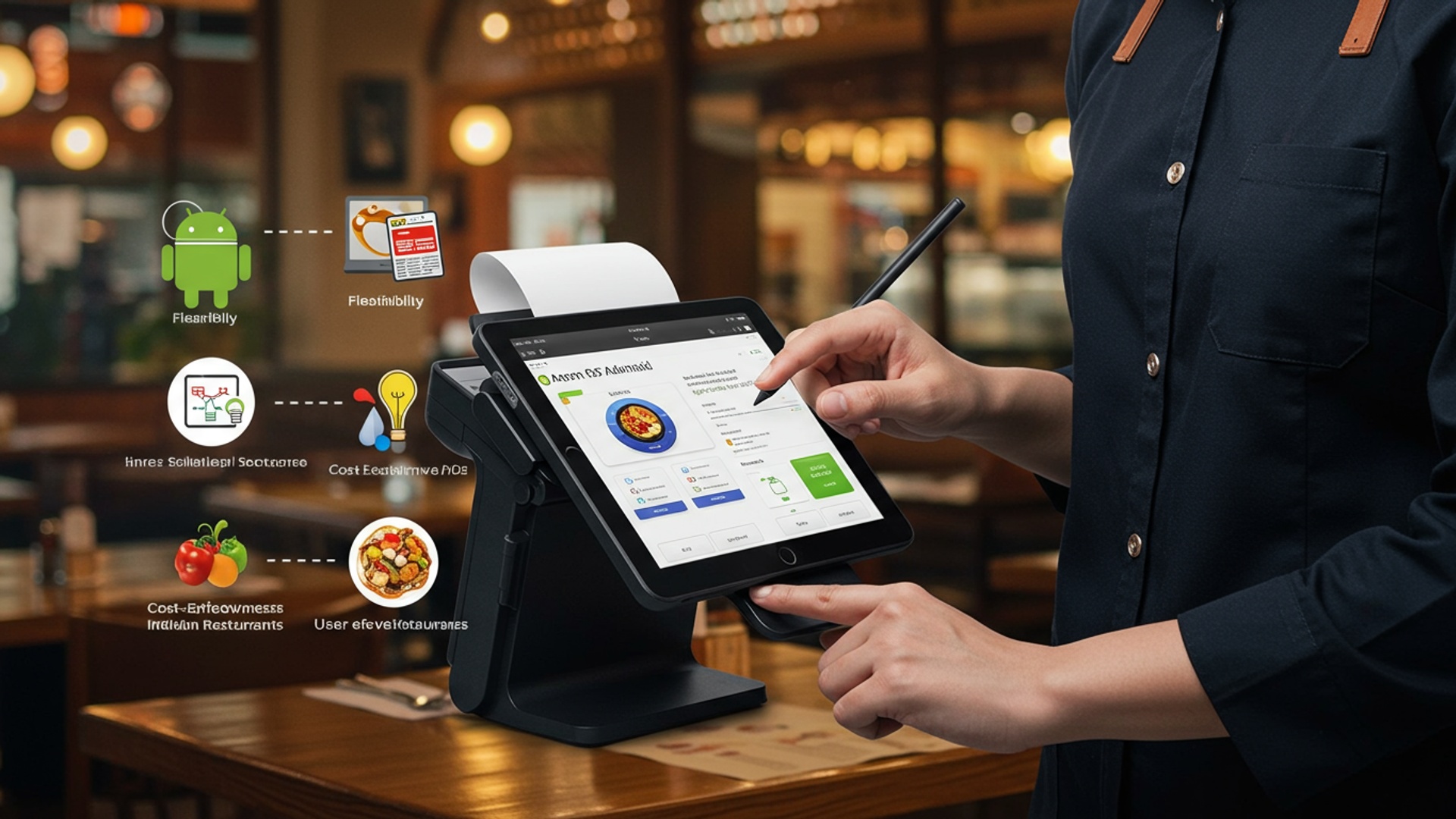
1. Cost-Effectiveness and Accessibility: A Game Changer for Indian Restaurants
One of the most compelling reasons for Indian restaurants to embrace Android POS systems is their inherent cost-effectiveness. In a market where every rupee counts, especially for small and medium-sized enterprises (SMEs), traditional proprietary POS hardware can represent a significant upfront investment. Android-based solutions, But, leverage readily available and affordable consumer-grade hardware, such as tablets and smartphones, transforming them into powerful business tools.
- Lower Hardware Costs
- Reduced Licensing Fees
- Scalability without Huge Investment
Unlike dedicated POS terminals that can cost upwards of INR 50,000 to 1,00,000, a high-quality Android tablet can be acquired for a fraction of that price. This significantly reduces the initial capital outlay, making sophisticated POS technology accessible even to new or smaller establishments.
Many Android POS software providers offer flexible subscription models, often more competitive than their proprietary counterparts. This allows restaurants to pay a manageable monthly or annual fee, rather than a large one-time software purchase.
As a restaurant grows, adding more Android POS terminals is straightforward and budget-friendly. This scalability is crucial for businesses looking to expand or manage peak seasons without breaking the bank.
For an emerging chain of cafes in Bangalore, for instance, opting for an Android POS for restaurants India meant they could equip all their new outlets with robust POS capabilities without staggering initial costs. This allowed them to allocate more capital towards ingredients and staff training, directly impacting customer experience.
2. User-Friendly Interface and Familiarity: Empowering Your Staff
The ubiquity of Android devices in India means that a significant portion of the workforce is already familiar with the operating system. This familiarity translates directly into a smoother adoption process and reduced training times for restaurant staff, from order takers to kitchen managers.
- Intuitive Navigation
- Faster Onboarding
- Reduced Error Rates
Android’s graphical user interface (GUI) is designed for ease of use. Staff members who use Android smartphones daily will find navigating an Android POS system incredibly intuitive, reducing the learning curve.
New hires can get up to speed much quicker, often requiring minimal training on the POS software itself, allowing them to focus on service protocols and menu knowledge. This reduces operational downtime and increases efficiency from day one.
A familiar interface minimizes the chances of input errors, leading to more accurate orders, billing. inventory management. This directly impacts customer satisfaction and reduces wastage.
Consider a traditional South Indian restaurant in Chennai that transitioned from a legacy, button-based POS system to an Android one. The owners reported that their older staff, initially hesitant about technology, adapted surprisingly quickly because the Android tablets felt like “bigger versions of their own phones.” This case highlights how an Android POS for restaurants India bridges the technological gap effectively.
3. Flexibility and Customization: Tailoring to Indian Culinary Diversity
Indian cuisine is incredibly diverse, with unique ordering styles, thali systems, regional specialties. specific billing requirements. Android’s open-source nature and the vast ecosystem of developers allow for a high degree of flexibility and customization, enabling a POS system to truly fit the unique operational needs of any Indian restaurant.
- Bespoke Software Solutions
- Modular Integrations
- Hardware Agnosticism
Developers can build or customize Android POS applications to handle specific needs, such as managing complex ingredient lists for Indian dishes, integrating regional language support, or developing unique loyalty programs relevant to the local market.
The modular architecture of Android allows restaurants to pick and choose specific functionalities they need, rather than being locked into an all-or-nothing proprietary system. This could include modules for table management, kitchen display systems (KDS), or specific inventory tracking for spices and fresh produce.
Android POS software can run on a wide range of hardware, giving restaurants the freedom to select devices that best suit their budget and operational environment, from ruggedized tablets for busy kitchens to sleek handhelds for fine dining.
A restaurant specializing in multi-cuisine offerings, from North Indian curries to Italian pastas, found immense value in an Android POS that allowed them to categorize their extensive menu with custom modifiers (e. g. , “extra spice,” “less oil,” “jain option”) directly on the ordering screen. This level of detail, critical for customer satisfaction in India, was easily achievable with their custom Android POS for restaurants India setup.
4. Robust Cloud Integration and Data Security: Managing Your Business Anywhere
Modern Android POS systems are predominantly cloud-based, offering Indian restaurants unprecedented advantages in data management, accessibility. security. Cloud integration means that all sales, inventory. customer data are stored securely off-site and accessible from any internet-connected device, anytime, anywhere.
- Real-time Data and Reporting
- Enhanced Data Security
- Remote Management
- Automatic Updates
Owners can monitor sales, track inventory levels. assess performance metrics in real-time, even when they are not physically present at the restaurant. This allows for quick, informed decision-making, such as adjusting staffing or ordering supplies.
Cloud providers invest heavily in security infrastructure, often offering more robust protection against data loss, hardware failure. cyber threats than on-premise solutions. Regular backups ensure business continuity.
From updating menu prices to managing staff schedules, restaurant owners can manage critical aspects of their business remotely. This is particularly beneficial for multi-outlet operations or owners who travel frequently.
Cloud-based Android POS systems receive automatic software updates, ensuring that restaurants always have the latest features and security patches without manual intervention.
A restaurant group with outlets across Mumbai and Pune uses a cloud-based Android POS for restaurants India to centrally manage all their menus, promotions. inventory. Their head chef can update a daily special across all locations instantly. the management team can compare sales performance between cities with a few clicks, streamlining their multi-location operations.
5. Enhanced Mobility and Streamlined Operations: Speeding Up Service
The portability of Android devices unlocks a new level of operational efficiency and customer service for Indian restaurants. Unlike bulky traditional POS terminals tethered to a counter, Android tablets and smartphones empower staff to move freely, taking orders and processing payments directly at the table.
- Tableside Ordering
- Faster Table Turnovers
- Inventory Management on the Go
- Improved Customer Experience
Waitstaff can take orders digitally at the table, sending them directly to the kitchen display system (KDS) or printer. This eliminates manual order pads, reduces errors. significantly speeds up order processing, especially during peak hours.
With quick ordering and tableside payment options, guests experience shorter wait times, leading to faster table turnovers and increased revenue potential for the restaurant.
Staff can conduct inventory checks directly from the storage room using an Android device, updating stock levels in real-time. This reduces manual errors and ensures accurate stock management.
Attentive service, quick order delivery. seamless payment processing contribute to a superior dining experience, encouraging repeat visits and positive reviews.
Imagine a bustling restaurant during a festival in Delhi. Waiters armed with Android tablets can quickly take orders, split bills effortlessly. process payments right at the table using integrated payment gateways. This not only enhances the customer’s experience but also drastically improves the operational flow, making an Android POS for restaurants India an invaluable tool.
6. Extensive App Ecosystem and Seamless Integration: A Connected Business
The Android platform boasts an unparalleled app ecosystem, allowing for seamless integration with a wide array of third-party applications that are crucial for modern restaurant operations in India. This connectivity transforms the POS from a mere billing system into a central hub for all business activities.
- Online Delivery Integrations
- Loyalty Programs and CRM
- Accounting Software Integration
- Payment Gateway Flexibility
With the rise of food delivery platforms like Swiggy and Zomato in India, integrating these services directly into the POS system simplifies order management, preventing manual re-entry and reducing errors.
Android POS systems can easily integrate with customer relationship management (CRM) tools and loyalty programs, allowing restaurants to track customer preferences, offer personalized discounts. build lasting relationships.
Seamless integration with popular accounting software streamlines financial reporting, tax compliance. payroll management, saving significant administrative time and effort.
Android POS platforms often support multiple payment gateways, including UPI, mobile wallets. traditional card payments, offering customers diverse and convenient payment options—a critical feature in India’s evolving digital payment landscape.
A popular pizzeria in Pune utilizes its Android POS for restaurants India to not only manage in-house orders but also to consolidate orders from various online delivery partners directly into their kitchen queue. This integration eliminated the need for multiple tablets and manual data entry, drastically improving efficiency and reducing order errors, directly impacting their bottom line and customer satisfaction.
Conclusion
Embracing Android POS isn’t just an upgrade; it’s a strategic move for Indian restaurants navigating today’s dynamic culinary landscape. We’ve seen how its mobility, cost-effectiveness. intuitive interface are transforming operations, from a bustling Mumbai street food joint to a serene Delhi fine-dining establishment. The current trend of widespread UPI adoption makes a mobile, integrated system indispensable for swift, error-free transactions, enhancing customer satisfaction and streamlining your payment processes seamlessly. My personal tip? Don’t just install; integrate your team into the transition. Empowering your staff to master this technology ensures maximum efficiency and exceptional guest service. I’ve witnessed firsthand how a well-implemented Android POS frees up staff to focus on what truly matters: the diner’s experience, rather than manual billing headaches. It’s time to move beyond outdated systems and embrace a solution that offers real-time insights and unparalleled flexibility. Take the leap, assess your needs. choose an Android POS that propels your restaurant into a smarter, more profitable future, ready to meet the demands of the modern Indian diner.
More Articles
5 Ways Restaurant Billing Software India Boosts Your Business Efficiency
Master 5 Ways Online Ordering POS Boosts Your Restaurant Sales in India
7 Essential POS System Features Small Indian Restaurants Need to Thrive
How to Choose the Best Android POS Software for Your Business
Learn 6 Smart Strategies for Better Inventory Management with POS in India
FAQs
Why should Indian restaurants consider an Android POS system?
Android POS systems are often more budget-friendly than traditional setups, making them a great choice for Indian restaurants looking to modernize without a huge upfront cost. They also offer a lot of flexibility and customization options tailored to your specific needs.
Is it easy for my staff to learn how to use an Android POS?
Absolutely! Most people are already familiar with Android smartphones and tablets, so your staff will likely find the interface intuitive and quick to pick up. This means less training time and more focus on serving customers efficiently.
What specific features are useful for an Indian restaurant’s operations?
An Android POS can handle complex menus with ease, including regional dishes, customizable add-ons. special requests. You can manage tables, generate KOTs (Kitchen Order Tickets) digitally, track inventory for ingredients. even manage loyalty programs, all tailored to your restaurant’s unique workflow.
What happens if the internet connection is unreliable or goes down?
Many Android POS systems come with excellent offline capabilities. This means your restaurant can continue taking orders, processing payments. managing operations seamlessly even if your internet connection drops, ensuring your business never grinds to a halt.
Can an Android POS integrate with online food delivery apps or other services?
Yes, integration is a big advantage. Android POS systems are designed to easily connect with popular online food delivery platforms, various payment gateways. other third-party applications, streamlining your entire ordering and delivery process from a single hub.
How does an Android POS actually improve overall restaurant efficiency and speed?
It significantly speeds up order taking, reduces manual errors through digital KOTs. provides real-time sales and inventory data. This helps you manage your kitchen better, track popular dishes, optimize stock. ultimately serve customers faster and more accurately, leading to higher satisfaction.
Is an Android POS system scalable as my restaurant grows or if I open new branches?
Definitely. Android POS solutions are highly scalable and flexible. It’s relatively easy and cost-effective to add more terminals, expand to new locations. manage multiple outlets from a central system, supporting your business efficiently as it expands and evolves.

